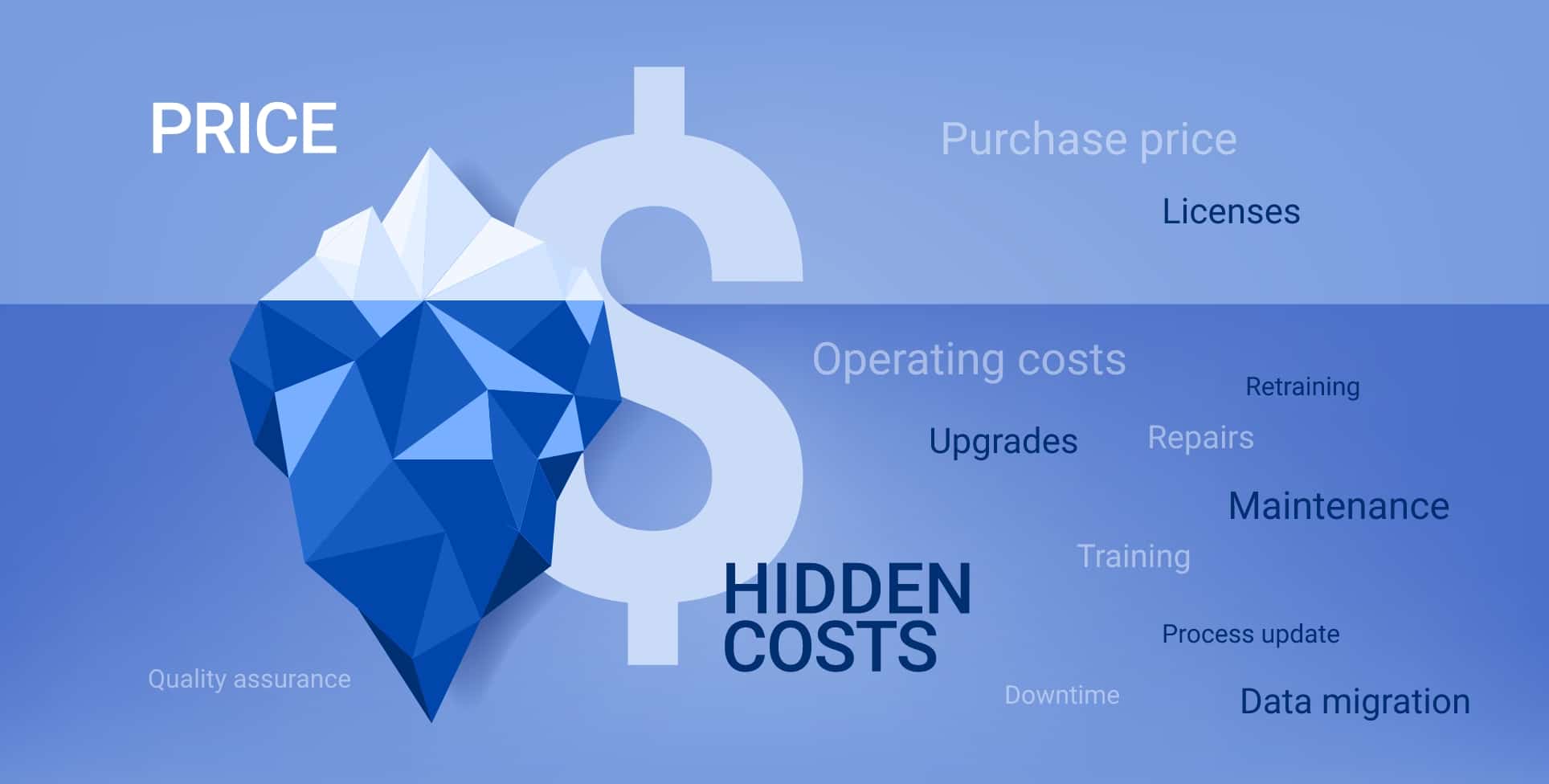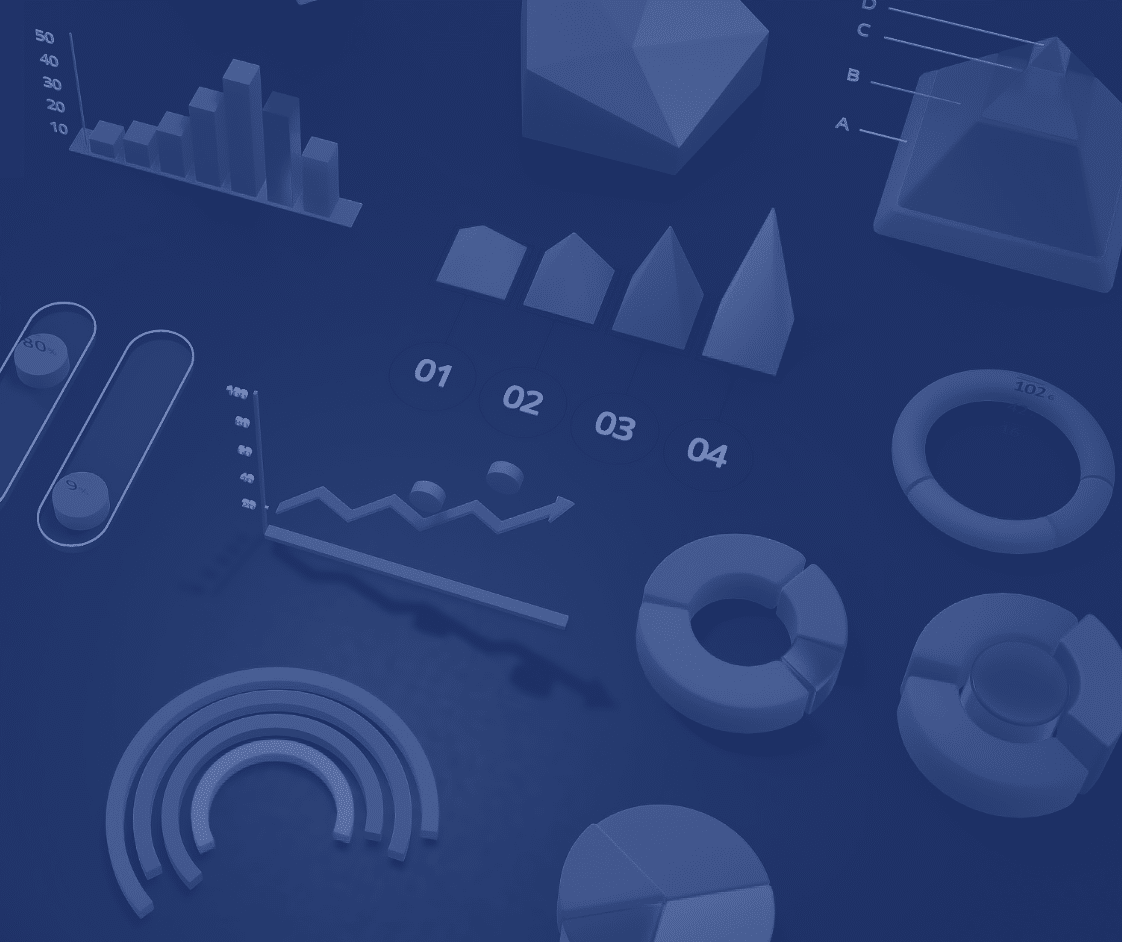Blog
Total Cost of Ownership – Definition & Calculation

Across industries, companies are increasingly investing in digital transformation. These investments in hardware and software are not only intended to accelerate and streamline processes, but also to reduce costs.
However, in practice, this expectation isn’t always met—and in some cases, companies are confronted with unexpected cost escalations.
That’s why accurate cost calculation prior to implementing new software is essential. In this paper, we explain why this is so important and how it can be done effectively.
1. Total Cost of Ownership – Why It Matters
When implementing a software solution, investment decisions and budget planning should be based on a comprehensive cost analysis. Yet, during software evaluations, many decision-makers focus solely on upfront acquisition costs. Ongoing operational costs are often ignored or simply overlooked.
The problem with this approach becomes clear with the following example:
Example: Open Source
Open source solutions are often selected because they can be used free of charge (acquisition cost). However, the lack of support frequently leads to unexpected follow-up costs (operational costs), potentially hindering business growth.
A Total Cost of Ownership (TCO) analysis enables companies to look beyond initial purchase costs and make more informed investment decisions. When used correctly, the model helps maximize Return on Investment (ROI) over time.
But where does one start when calculating TCO for a software solution? And how can ROI be optimized at the same time?
2. Total Cost of Ownership – The Calculation
Definition Total Cost of Ownership:
Beim Total Cost of Ownership (TCO) Modell handelt es sich um eine Methode zur Erfassung und Berechnung aller Kostenposten einer Investition, über deren gesamten Lebenszyklus hinweg.
The Total Cost of Ownership (TCO) model is a method used to capture and calculate all cost components of an investment over its entire lifecycle.
Today, there are multiple TCO models designed to capture every cost incurred during the acquisition, operation, and usage of software solutions and their infrastructure.
These models are applied depending on the use case and follow best-practice approaches. Although their emphasis may differ, they all draw attention to hidden costs by distinguishing between direct and indirect costs—and also factoring in opportunity costs.
Direct Costs:
These are directly tied to acquiring and using the software and are relatively easy to budget. They include the purchase price, recurring license fees, and more.
Indirect Costs:
These are harder to predict and quantify. They may arise from system outages or inefficient software usage, for example.
3. Software Cost Components
The goal of a TCO model is straightforward: to identify, manage, and optimize as many cost components as possible in the context of investment decisions.
A TCO analysis includes not only acquisition costs but also operating and end-of-life costs.
Reference data and past experience are often used to estimate hard-to-measure costs.

1. Acquisition Costs
These often form the centerpiece of software evaluations and negotiations.
Acquisition costs include all expenses required to make a software system operational, such as:
The last item is often a cost driver, and support packages can vary significantly among providers. Companies considering in-house support should also account for the internal resources required—including administrative and personnel costs—which must be reflected in the TCO.
Compared to custom software, off-the-shelf products typically have lower acquisition costs. However, over time, total costs may be significantly higher if individual adjustments and customization are needed.
2. Operating Costs
Operating costs include all expenses associated with running and using a software solution that occur after acquisition. Examples of direct and indirect operating costs include:
These costs can account for a significant portion of total expenses. That’s why ongoing evaluation of the software, along with the supporting processes, is crucial. Costs related to disaster recovery planning and backups should also be considered from the outset.
Because no system offers 100% reliability, support from experts who know the software, keep it up to date, and ensure its proper use is essential.
High-quality software vendors distinguish themselves by proactively developing upgrades and offering training on new versions and features.
3. End-of-Life Costs
As the name suggests, end-of-life costs are incurred when a system is decommissioned at the end of its lifecycle. These costs arise when a system becomes outdated or no longer meets business needs. They may include:
4. Quality of the TCO Analysis
The quality of a TCO analysis depends on various factors, such as the expertise and diligence of the project team and the availability of data.
Calculating operational costs can be particularly challenging, as it’s nearly impossible to predict outages or security incidents with precision. Reference data and peer benchmarks can help guide estimations.
Consultants can also provide value by modeling different cost scenarios based on their industry and software market experience.
The cost-benefit analysis of technology investments is inherently complex and dynamic. Conditions that impact cost structures can change continuously.
5. Best Practices for Software Selection
Key best practices in software selection include:
Importance of Data
TCO analysis is a resource-intensive process that requires data from various departments and sources. Having accurate, up-to-date data is a critical prerequisite.
Identifying Hidden Costs
Many companies are tempted to skip the TCO analysis entirely. In software selection, this often leads to purchase decisions that burden financial results in the long run due to hidden costs.
Embedding TCO in the Process
It is highly advisable to integrate TCO analysis directly into the software evaluation process and use it to compare different options.
Time Factor
Best practices emphasize the importance of time and maximizing ROI. The success of a TCO analysis depends on identifying costs accurately and early on. Since many costs are time-sensitive and factors like inflation, market shifts, or new regulations can cause sudden price changes, TCO should be calculated close to the actual software purchase date.
Appropriate Time Horizon
An appropriate time horizon is also crucial. For example, if software typically becomes outdated five years after purchase, a ten-year TCO calculation would be misleading.
6. Cost-Benefit Analysis & ROI
Digital transformation projects—such as implementing a PIM or DAM solution—involve investment costs. Project stakeholders face pressure to report transparently and justify expenditures.
As a result, many tend to focus solely on costs, overlooking the potential benefits of the software, such as increased productivity and business growth. This is a mistake.
Expanding the TCO analysis to include a cost-benefit assessment helps ensure that the project’s strategic goals remain in focus.
Estimating ROI during the evaluation phase also allows project teams to identify critical and strategically relevant areas early in the project.
Implementing a software solution is about more than integrating technology into an IT landscape. Software reaches its full potential when supported by evolved, accepted, and actively used processes and structures within the organization.
That’s why the TCO analysis and the final software selection should take into account not only direct, but also indirect factors. Indirect factors include the positive, non-monetary impacts of software adoption—such as future readiness, improved customer experience through better organizational positioning, and overall productivity gains.
Conclusion
Total Cost of Ownership (TCO) encompasses all direct and indirect costs incurred over the entire lifecycle of a software solution—from implementation to operation and beyond. Only those who consider all cost factors can make informed decisions and ensure long-term economic viability.
When selecting a software solution, it pays to look beyond the obvious:
- Calculate the TCO early.
- Include a cost-benefit analysis in addition to total costs.
- Factor ROI into your decision-making.
- Consider indirect, non-monetary impacts.
- Commit to continuous optimization from the start.
Integrating TCO is a journey that each company must undertake based on its individual capabilities. For example, the maturity of the information supply chain plays a significant role, as TCO analysis requires cross-functional data transparency.
To guide your first steps in TCO analysis, consider the following questions:
- Where do we typically look when aiming to cut costs?
- What costs could we evaluate based on available data?
- What additional information do we need to make a final, impact-driven decision?
Not sure how to estimate the true cost of your software initiative?
Let us help you break down the Total Cost of Ownership and uncover long-term value. Contact us today.
Highlighted Whitepaper
ePaper: Strategic Product Content Management with PIM & DAM
How to Optimize Product Content Management for Long-Term Success: Discover how to streamline your workflows with PIM & DAM. Our white paper offers actionable insights and proven strategies to help you build a scalable, efficient, and future-proof approach to product content management.
Accomplish more together
We believe in the value of collaboration and exchange. This applies both to our customer projects, from which we generate many valuable insights for our product development, and to our growing partner network, with an extensive range of which we support our customers in their digitization.



